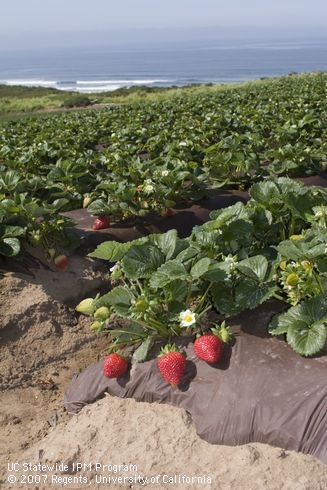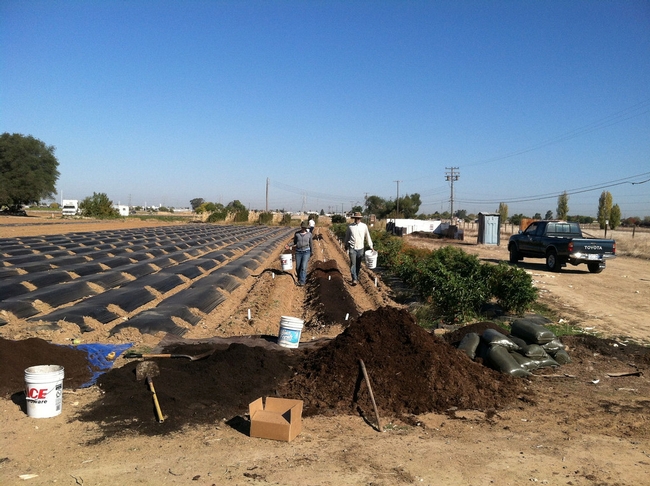Writing on Earth Day, I am reminded of one of the world's major successes in environmental protection, the Montreal Protocol. Originally signed in 1987, it works to phase out ozone-depleting substanc
Twenty-seven years later, the realities of enacting the Montreal Protocol are still taking shape, and strawberry growers are, with each harvest year, a step closer to a complete phase out of the fumigant and increased restrictions on alternative chemical fumigants used for disease suppression.
UC research has focused on how to make an economically viable and effective transition away from the soil fumigant. Initial alternatives include replacement chemical fumigants as well as biological fumigants such as anaerobic soil disinfection (such as putting tarps over fields to decrease oxygen), mustard seed meal amendment, or steam disinfestation.
But what if a practice many growers already use could also serve to suppress soil-borne diseases? What if growers could use a substance that provides multiple on-farm benefits?
Many conventional and organic growers alike use compost to boost soil fertility and organic matter. But compost's potential to serve other purposes, including suppressing disease, remain largely unexplored.
Ph.D. student Margaret Lloyd and Tom Gordon, professor in the Department of Plant Pathology at UC Davis, are hoping to close the gap in that knowledge. With a grant from the National Strawberry Sustainability Initiative, a program administered by University of Arkansas and funded by Walmart Foundation, and funding from UC Sustainable Agriculture Research and Education Program, Lloyd's research seeks to understand whether compost can contribute to disease suppression on a commercial scale, and how growers can best incorporate compost into their farm management to see its benefits.
“Compost is part of the production system that has potential as biological control,” says Lloyd. “Historically, we've only focused on it as a source of organic matter or soil nutrients. I'm trying to characterize its role in root health and soil health.”
The study evaluates the root health of strawberry plants, and compares plant yield and disease suppression across a number of research sites and compost types.
“In general, we talk about compost just as compost,” Lloyd said. “But it has drastically different qualities — soil fertility characteristics, physical properties, and microbial profiles. By focusing on different compost sources, the study will help growers better assess their available compost options to m
Alternatives to methyl bromide have been a long time coming. “The research suggests that it won't be one technology replacing another, but a package of tools to help growers manage disease suppression in the soil,” Lloyd said. If some of those tools are already in a grower's tool kit, the transition away from fumigants will be that much smoother.
The research suggests a powerful Earth Day message for me: use what you have, but seek a deeper understanding of just how to use it.
Lloyd's research findings will be completed in 2014, with results available for growers in 2015. Visit the project's website for more information.